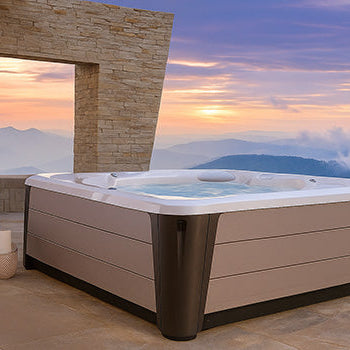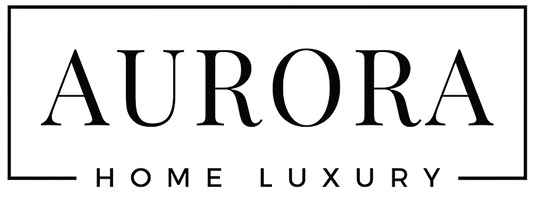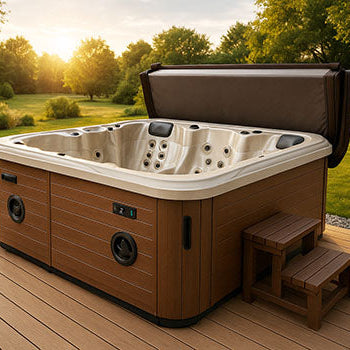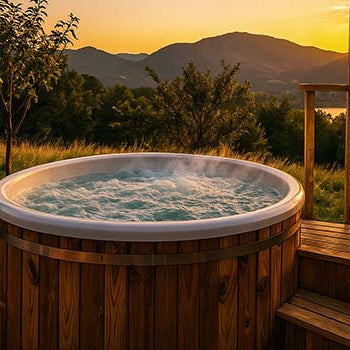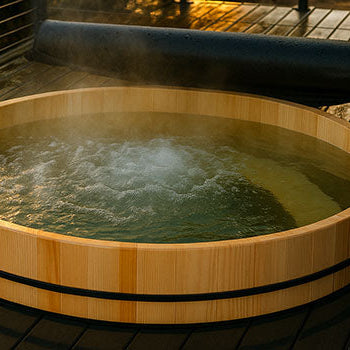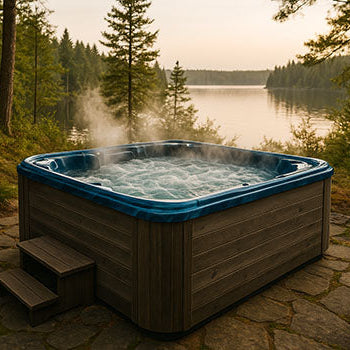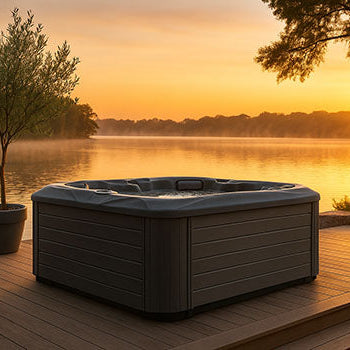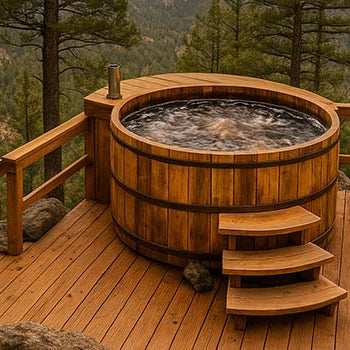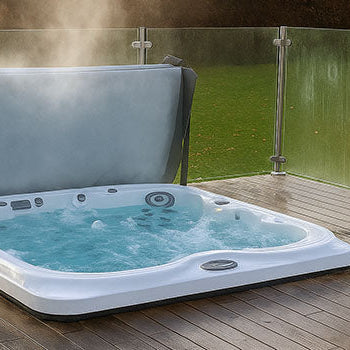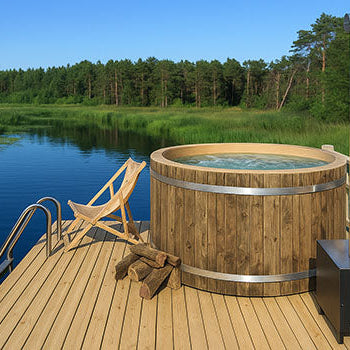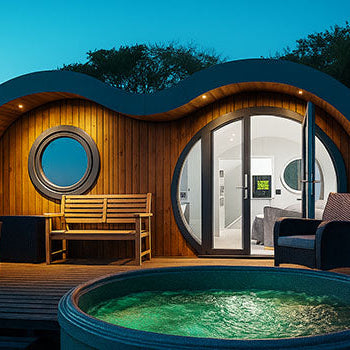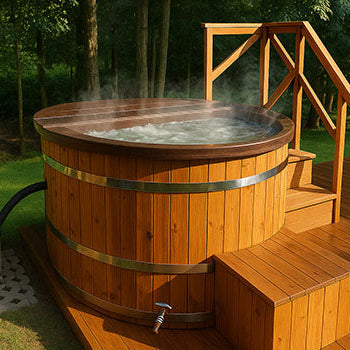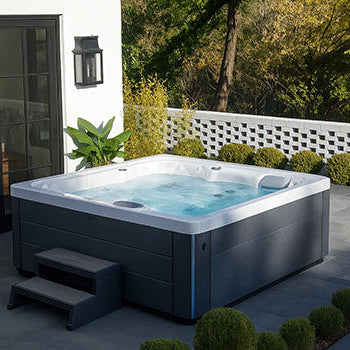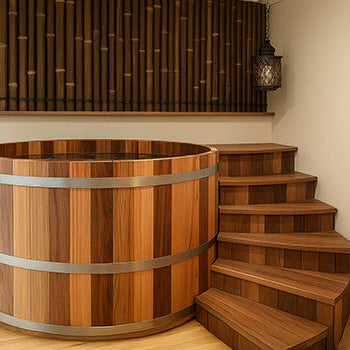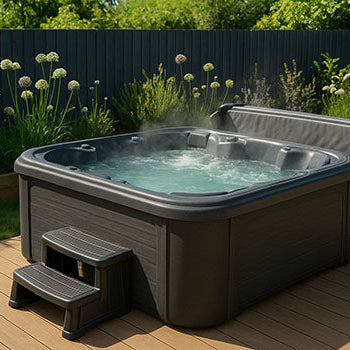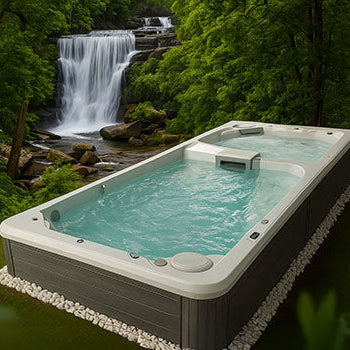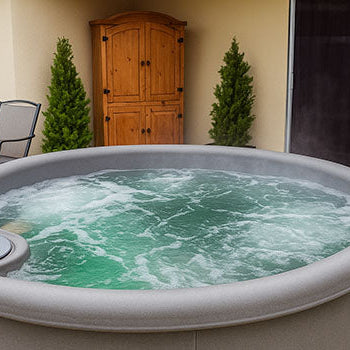Feeling tempted by a steamy soak? Hold that thought, your hot tub might not always be the right move. Whether it's your trusty Rotomoulded spa or a classic Wooden retreat, there are moments when stepping in just isn’t wise.
The short answer? Avoid hot tubs when you're ill, pregnant, injured, freshly medicated, or after a wild night out. Even the most luxurious Acrylic Hot Tub won’t fix what your body isn’t ready for. Stick around to find out when to skip the soak and why knowing these red flags could save you from more than just a sweaty forehead.

Understanding Potential Hot Tub Risks
The Danger of Overheating (Hyperthermia)
Hot tubs feel like heaven, but they can raise your body temperature faster than you think. If you stay in too long, especially in hotter water, your internal cooling system can struggle to keep up. That’s when hyperthermia kicks in. You might feel light-headed, nauseous, or even faint.
Too hot for too long? Step out. Hydrate. Cool down.
Effects on Blood Pressure and Circulation
Warm water makes your blood vessels expand. This sounds nice, until your blood pressure drops too low, leaving you dizzy or wobbly when you get out. On the other hand, people with high blood pressure might see a sudden spike, especially when going from cold to hot quickly.
If you’ve got circulation issues, always check with your doctor first.
Dehydration Risks During Soaking
You might not feel it, but you’re sweating in that tub. A lot. The heat draws moisture out of your body fast. Even a 15-minute soak can leave you mildly dehydrated without a sip of water nearby. Add alcohol into the mix, and it gets worse.
Always bring water to your soak. Sip, don’t slip.
Water Contamination Concerns (If Maintenance is Lacking)
Cloudy water? Strong chemical smell? That’s a red flag. If your hot tub isn't properly maintained, it becomes a five-star hotel for bacteria. Skin rashes, ear infections, or worse can show up if hygiene takes a back seat.
Whether it’s an Acrylic Hot Tub, a Rotomoulded spa, or a Wooden model, clean water is non-negotiable.
Health Conditions Requiring Caution or Avoidance
Pregnancy and Hot Tubs: Current UK Advice
During pregnancy, especially the first trimester, hot tubs are best avoided. Why? The heat can increase the risk of neural tube defects in developing babies. Later in pregnancy, there's still a risk of overheating.
Midwives across the UK often say it’s better to sit this one out, just to be safe.
Heart Disease and Cardiovascular Health
Got a heart condition? Press pause. Hot tubs can raise your heart rate and lower blood pressure, which can put stress on your heart. If you’ve had a heart attack or have ongoing heart issues, soaking could trigger complications.
Talk to your doctor before using a hot tub. No exceptions.
Considerations for High or Low Blood Pressure
Both high and low blood pressure react to heat. If yours tends to drop, you might feel weak or dizzy after just a few minutes. If it's high, the abrupt heat might spike it dangerously.
It’s not about the temperature of the water, it’s about how your body responds to it.
Diabetes and Temperature Sensitivity
Many people with diabetes have reduced sensitivity in their feet and trouble regulating temperature. That means you may not realise your body is overheating until it’s too late. Cuts or burns might go unnoticed.
Also, blood sugar can dip after a soak, especially if you’ve just eaten or exercised.
Open Wounds, Skin Infections, or Conditions
A small cut might seem harmless, but bacteria love open skin. Add in the warm, damp environment of a spa, and it becomes a breeding ground. Plus, if you’re dealing with eczema or psoriasis, hot water might trigger a flare-up.
Wait until your skin is fully healed before hopping in.
Neurological Conditions or Temperature Regulation Issues
If your condition affects your nervous system, like MS or autonomic disorders, you may not be able to tell when you’re getting too hot. That’s risky. Losing the ability to feel temperature changes can be dangerous in a hot tub.
Always check with a healthcare provider before use.

Circumstances When Hot Tub Use is Not Recommended
After Drinking Alcohol or Using Certain Drugs
Alcohol and hot tubs? Bad combo. You’ll dehydrate quicker, lose coordination, and risk falling asleep in the water. Some medications, like sleeping pills, sedatives, or strong painkillers, increase your chances of dizziness, confusion, or even fainting.
If you’ve had a drink or just popped a pill, don’t soak.
When Ill with Fever, Diarrhoea, or Vomiting
Already feeling unwell? Keep out. Fevers can worsen quickly in warm water. And if you’ve got stomach bugs? You risk spreading germs in the water.
Hot tubs aren’t hospitals. Rest up first, then enjoy your spa day later.
While Taking Specific Medications (Consult Your GP or Pharmacist)
Some medications mess with your ability to regulate heat or hydration. Blood pressure meds, diuretics, antidepressants, and antihistamines are just a few examples.
If you're unsure, ask your GP or pharmacist before soaking. It’s a small step that could prevent a big issue.
Straight After Vigorous Exercise (Allow Time to Cool Down)
After intense exercise, your body is already hot. Jumping straight into a spa adds fuel to the fire, literally. Give yourself at least 30 minutes to cool off, rehydrate, and let your heart rate settle.
Think of it as a reward, not part of the workout.
If Hot Tub Water Quality is Questionable
If it’s green, cloudy, has a strong smell, or hasn’t been tested recently, don’t chance it. You wouldn't drink questionable water, so why soak in it?
Always keep your test strips close and trust your nose and eyes.
Hot Tub Safety for Children and Older Adults
Guidelines for Children Using Hot Tubs (Age, Time, Temperature)
Kids heat up faster and cool down slower. Under 5s? Best to avoid hot tubs completely. Older children can dip in, but only for 5–10 minutes and never above 35°C. Keep their shoulders above water and always supervise.
No splash parties in high temps, it’s not worth the risk.
Considerations for Elderly Users
For seniors, hot tubs can be lovely, but balance, mobility, and health conditions make safety extra important. The risk of falls, overheating, or low blood pressure is higher.
Stick to shorter soaks, moderate temps, and always have a safe way in and out.
General Safety Practices for All Users
Adhering to Recommended Soak Times (15–20 mins)
Too much of a good thing? It applies here. Fifteen to twenty minutes is plenty. If you feel light-headed or sweaty, step out. Take a break, grab a drink, and you can always hop back in later.
Keeping Water Temperature Below 40°C (104°F)
It might be tempting to crank it up, but anything over 40°C is not spa-safe. That’s the ceiling for healthy adults, and even then, shorter soaks are best. For kids, the elderly, or anyone with a condition? Keep it lower.
Staying Hydrated
Hot tubs dehydrate you. That’s not a myth, it’s science. Bring a water bottle and sip throughout. Avoid alcohol, fizzy drinks, or anything sugary while soaking.
Plain water keeps you steady and safe.
Avoiding Using a Hot Tub Alone if Vulnerable
If you’re pregnant, older, or have a medical condition, never use a hot tub alone. If something goes wrong, you need help quickly. Let someone know you’re getting in, or have a buddy nearby.
A relaxing soak is better with peace of mind.

Conclusion: Putting Safety First for Hot Tub Enjoyment
Hot tubs are all about relaxation, healing, and comfort, but only when used wisely. Whether you’re enjoying a modern Acrylic Hot Tub, a budget-friendly Rotomoulded spa, or a rustic Wooden one, knowing when not to use it is just as important as knowing how.
Your body talks. Listen to it. Feeling light-headed? Been drinking? On meds? Recovering from surgery? Skip the soak. The tub will still be there when you're ready.
So soak smart, stay safe, and enjoy the bubbles on your terms.
